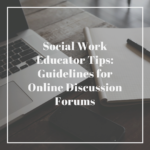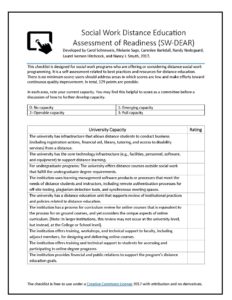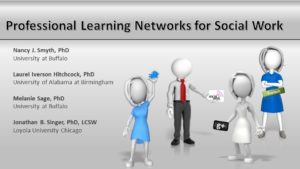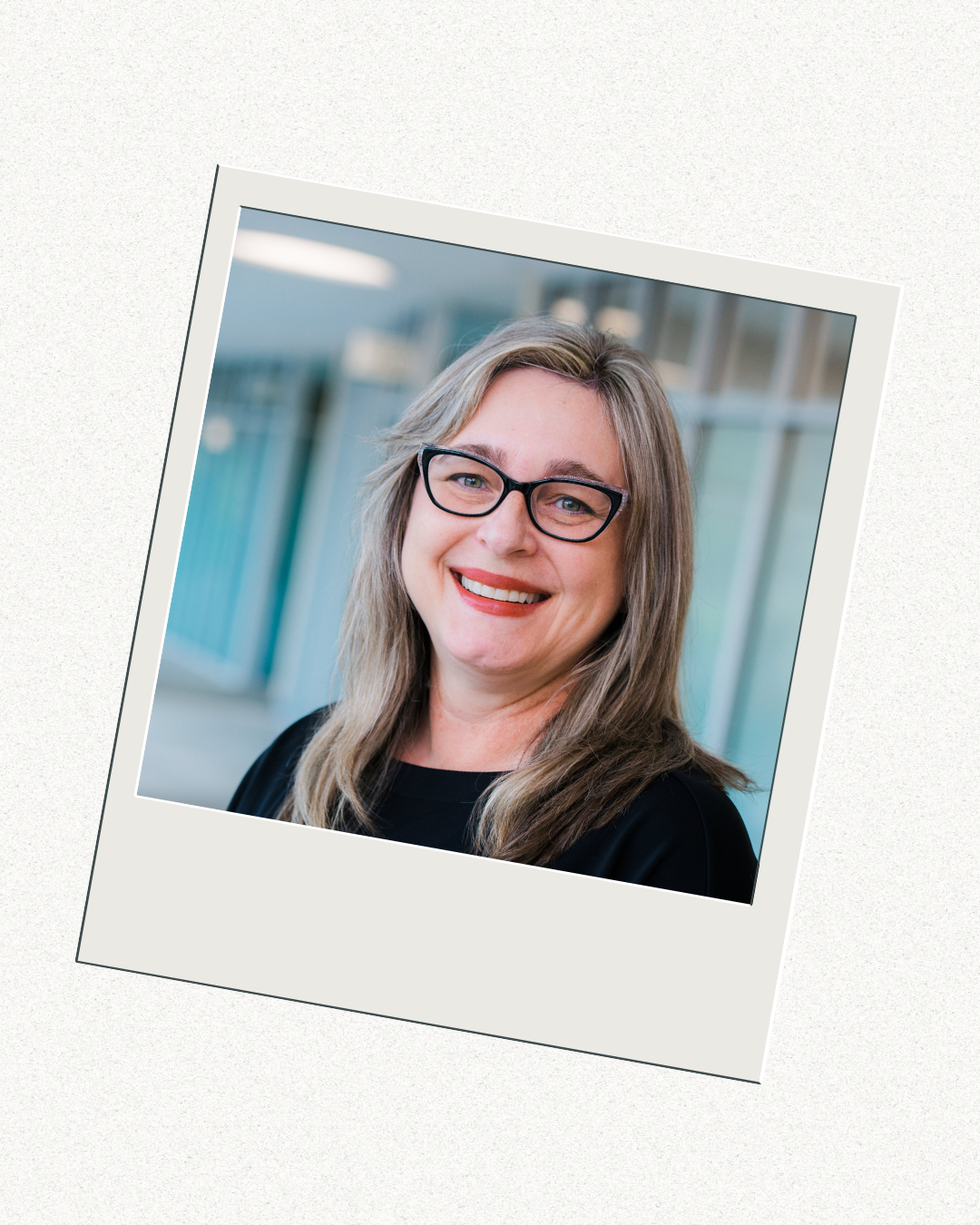Social Work Educator Tips: Guidelines for Online Discussion Forums

 Karen Zgoda is a social work educator, a Doctoral Student in Public Policy at the University of Massachusetts in Boston, MA, and a founding member of #MacroSW, an online community for macro social workers. In this blog post, she shares her tips for helping social work students learn how to be professional in online learning environments. This post is cross-listed on Karen’s blog at https://karenzgoda.org/.
Karen Zgoda is a social work educator, a Doctoral Student in Public Policy at the University of Massachusetts in Boston, MA, and a founding member of #MacroSW, an online community for macro social workers. In this blog post, she shares her tips for helping social work students learn how to be professional in online learning environments. This post is cross-listed on Karen’s blog at https://karenzgoda.org/.
Did you know that 95% of Americans own a cell phone of some kind, 7 in 10 Americans use social media, and that 89% of U.S. adults currently use the Internet? In fact, many check the most popular social media sites daily:
Despite the ubiquitous nature of technology and social media, we should not assume that social work students know the rules of online etiquette, especially online etiquette in professional settings. Students may not realize they are using casual language, making inappropriate or snarky comments, or revealing much about their personal lives they would not want their supervisors or professors to know. In fact, students are learning to regularly clean up their social media to take better care of their online reputations and their brand. If students are not sure what this means, I show a video clip from the The Ellen DeGeneres Show that highlights very effectively in 10 minutes why this can be problematic:
Social Work Distance Education Assessment of Readiness Checklist (SW-DEAR)
This post was written and edited by Nancy J. Smyth, Melanie Sage, and myself. It will be included in our forthcoming book, Teaching Social Work with Digital Technology, to be published by CSWE Press in 2018.
 Social work programs develop online social work programs in different ways – converting courses overtime until the entire curriculum is online; launching designated online cohorts; insourcing (hiring faculty to teach online); or outsourcing (hiring an outside firm to put your program online), including varying degrees of faculty autonomy in developing and teaching an online courses. Regardless of the approach, a first step in the process is assessment of a social work program’s readiness for online programming, and a reason for a struggling online program often has to do with stretched capacity. Many campus-wide issues must be considered before launching any type of fully online programming. These considerations include the ways in which online programming makes education more, or less, accessible to different populations of students, gatekeeping concerns, and implicit curriculum issues. To help social work programs consider capacity issues related to online programming, we have collaborated with the faculty members Carol Schneweis, Carenlee Barkdull, and Randy Nedegaard at the University of North Dakota’s Department of Social Work to develop the Social Work Distance Education Assessment of Readiness Checklist (SW-DEAR) which programs can use to assess readiness to launch online programming, and identify opportunities to strengthen current programming.
Social work programs develop online social work programs in different ways – converting courses overtime until the entire curriculum is online; launching designated online cohorts; insourcing (hiring faculty to teach online); or outsourcing (hiring an outside firm to put your program online), including varying degrees of faculty autonomy in developing and teaching an online courses. Regardless of the approach, a first step in the process is assessment of a social work program’s readiness for online programming, and a reason for a struggling online program often has to do with stretched capacity. Many campus-wide issues must be considered before launching any type of fully online programming. These considerations include the ways in which online programming makes education more, or less, accessible to different populations of students, gatekeeping concerns, and implicit curriculum issues. To help social work programs consider capacity issues related to online programming, we have collaborated with the faculty members Carol Schneweis, Carenlee Barkdull, and Randy Nedegaard at the University of North Dakota’s Department of Social Work to develop the Social Work Distance Education Assessment of Readiness Checklist (SW-DEAR) which programs can use to assess readiness to launch online programming, and identify opportunities to strengthen current programming.
This checklist is a self-assessment related to best practices and resources for distance education. The assessment includes 43 items that cover the following areas of capacity:
Technology in Social Work Education: Educators’ Perspectives on the NASW Technology Standards for Social Work Education and Supervision
In 2017, newStandards for Technology in Social Work Practice were issued to address the intersections of professional social work practice and technology. The National Association of Social Workers (NASW), along with the Council on Social Work Education (CSWE), Association of Social Work Boards, and the Clinical Social Work Association cosigned the Standards, developed by a committee of primarily social work practitioners. CSWE clarified that the standards are not part of the 2015 Educational Policy and Accreditation Standards competencies and are not part of the accreditation process (Council on Social Work Education [CSWE],personal communication, June 30, 2017). The authors of the Standards also offered brief interpretations of each of the Standards and sub-standards.
Hearing a call for more thorough guidance, the editors of this document reached out to social work educators and supervisors with specialized knowledge of teaching and supervising with technology and asked them to help us think about Section 4, Social Work Education and Supervision. In the early Fall of 2017, 23 people responded to the request to contribute their best practice and research wisdom. We used technology to crowd-source (obtain input of a number of people online), which allowed us to co-create, co-edit, and get rapid feedback on this document over the course of a month. The result of this effort is a document (see end of this post to access a copy of this document) that includes the original standards published by NASW, followed by interpretations developed by the group of 26 (all three editors and the 23 contributors) social work academics and supervisors. It offers considerations for decision-making related to the benefits and risks of technology use in teaching and supervision, developed by those who have direct experience in these arenas.
We extend our appreciation to the contributors, and to all social work educators and supervisors who strive to see all the potentials and benefits of technology, innovate while holding up our professional values and ethics, and understand and educate about risks of technology while working with and on behalf of people who are the most vulnerable.
Thank you,
Editors
Laurel Iverson Hitchcock, University of Alabama at Birmingham
Melanie Sage, University at Buffalo
Nancy J. Smyth, University at Buffalo
Using Technology for Social Work Scholarship: Creating and Sharing your Work
This post was written and edited by Nancy J. Smyth, Melanie Sage, and myself as part of our collaboration on our forthcoming book, Teaching Social Work with Digital Technology, to be published by CSWE Press in 2018.
Social and digital technologies offer many tools and opportunities to create and disseminate scholarship in social work. For example, social work educators can use blogs, podcasts, videos, and infographics to create and share content for professional purposes. To see an example of how to use infographics, please see Harnessing Technology for Social Work Scholarship (Hitchcock & Sage, 2017). This blog post describes two social work academics are using social media to share their research with others.
Dr. Jimmy A. Young, an Assistant Professor of social work at California State University San Marcos, shares how he uses social media to disseminate his research:
Social media technologies offer exciting opportunities to disseminate scholarship with a broader audience and share your research with others. A few examples include using Twitter to share a quick highlight or quote with a direct link to the article, a blog post with a longer quote or summary and direct link to the article, or some sort of video message on YouTube or Snapchat that also shares a summary and direct link. Today’s social media users enjoy rich content and video is an engaging way to share articles with others. I have also been successful in using professional academic social networks such as ResearchGate or Academia.edu to host articles, post summaries and links, as well as to connect with others working in a similar area. The great thing about these websites is you can get some analytics that can be useful for demonstrating your scholarly impact. For example, I have open access articles on ResearchGate that have garnered thousands of views and many of these articles have found their way into other scholar’s work as citations. GoogleScholar is another great way to manage your academic profile online and keep track of your scholarship and citations. Remember that some publishers do not want their articles shared on these websites for copyright reasons, but more and more are beginning to allow academics to post pre-print copies and even full online print versions. ResearchGate has been very useful because they are establishing relationships with some publishers to ensure that your work is freely available to share with others. Also, remember that many publishers provide a number of free copies for authors to distribute, and these copies can be great to share on social networks and increase your citations, online presence, and maybe even make you famous. Perhaps just moderately famous. (J.A.Young, personal communication, November 3, 2017).
#APM17 – Harnessing Technology for one’s own Good: Professional Learning Networks in Social Work
 On 10/22/17, the last day of CSWE’s 2017 Annual Program Meeting, at 10:00 AM in the Dallas Ballroom A-2, Nancy J. Smyth, Melanie Sage, Jonathan Singer, and I are presenting about how social work educators can use technology for career-long learning. Nancy, Melanie and I introduced the idea of professional learning networks (PLN) to a packed room at Social Work Distance Education Conference in April, and wanted to bring the practice to the #APM17 crowd. A PLN incorporates technology-based tools and processes in a way that allows individuals to stay up-to-date and share information about current news, practice knowledge and current research findings. We will be talking about the mechanics, advantages and disadvantages of establishing a PLN. One resources we will be sharing is our Professional Learning Network (PLN) Worksheet, which takes a social worker through the steps of creating their own PLN. You can get your own copy here: https://drive.google.com/file/d/0ByR_E-iQH7PdT2t1WV9YYnlZV00/view?usp=sharing
On 10/22/17, the last day of CSWE’s 2017 Annual Program Meeting, at 10:00 AM in the Dallas Ballroom A-2, Nancy J. Smyth, Melanie Sage, Jonathan Singer, and I are presenting about how social work educators can use technology for career-long learning. Nancy, Melanie and I introduced the idea of professional learning networks (PLN) to a packed room at Social Work Distance Education Conference in April, and wanted to bring the practice to the #APM17 crowd. A PLN incorporates technology-based tools and processes in a way that allows individuals to stay up-to-date and share information about current news, practice knowledge and current research findings. We will be talking about the mechanics, advantages and disadvantages of establishing a PLN. One resources we will be sharing is our Professional Learning Network (PLN) Worksheet, which takes a social worker through the steps of creating their own PLN. You can get your own copy here: https://drive.google.com/file/d/0ByR_E-iQH7PdT2t1WV9YYnlZV00/view?usp=sharing
You can access a copy of the presentation slides here: https://www.slideshare.net/laurelhitchcock/professional-learning-networks-for-social-work-81048022


